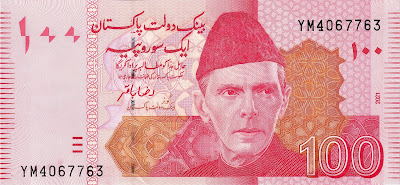The Indian Rupee, denoted by the symbol ₹ and the ISO code INR, stands as a symbol of India's rich cultural heritage, economic prowess, and resilience. With a history spanning centuries, the Indian Rupee has evolved from its ancient origins to become one of the most widely recognized currencies in the world. Today, it plays a pivotal role in India's economy and holds significance in the global financial landscape.
The roots of the Indian Rupee can be traced back to the ancient civilizations of the Indian subcontinent. Historically, various forms of currency were used in India, including cowrie shells, metal coins, and silver rupees. The term "rupee" is believed to have originated from the Sanskrit word "rupya," meaning "wrought silver" or "coin." Silver rupees were widely circulated during the Mughal Empire, which ruled over the Indian subcontinent from the 16th to the 19th century.
During British colonial rule, the Indian Rupee underwent significant changes. In 1835, the British East India Company introduced the "Coinage Act," which standardized the Indian Rupee as the official currency of British India. Silver rupees continued to be minted, but with the British monarch's effigy replacing traditional motifs. The Indian Rupee became a vital instrument of colonial exploitation, facilitating trade and economic control.
Following India's independence in 1947, efforts were made to establish the Indian Rupee as a symbol of national sovereignty and economic self-reliance. In 1950, the Indian government introduced the "Indian Coinage Act," which replaced British currency with a new series of coins and banknotes featuring Indian symbols and leaders. The Reserve Bank of India (RBI) was tasked with regulating the currency and monetary policy to ensure economic stability and growth.
In the decades that followed, the Indian Rupee faced various challenges, including inflation, devaluation, and economic reforms. In 1991, India embarked on a path of liberalization and globalization, dismantling many of the socialist-era policies and opening up its economy to foreign investment and trade. These reforms had a profound impact on the Indian Rupee, leading to greater exchange rate flexibility and integration into global financial markets.
Today, the Indian Rupee is one of the most traded currencies in the world, with a significant presence in international foreign exchange markets. Its value is influenced by a myriad of factors, including domestic economic indicators, geopolitical developments, and global market trends. The Reserve Bank of India plays a crucial role in managing the Rupee's exchange rate through monetary policy tools such as interest rate adjustments and foreign exchange interventions.
In recent years, the Indian Rupee has faced challenges such as inflationary pressures, trade imbalances, and geopolitical tensions. Fluctuations in oil prices, a key import for India, also impact the Rupee's value, given its significant energy needs. Despite these challenges, India's robust economic growth, large consumer market, and skilled workforce continue to attract foreign investment, bolstering confidence in the Indian Rupee.
The Indian Rupee's origin reflects India's rich cultural heritage and historical legacy. Its value in today's market is shaped by a complex interplay of domestic and global factors, highlighting India's importance in the global economy. As India continues to navigate the challenges of the 21st century, the Indian Rupee remains a symbol of resilience, progress, and economic vitality.

.jpeg)
.jpeg)
.jpg)
.jpg)
.jpg)
.jpg)
No hay comentarios:
Publicar un comentario